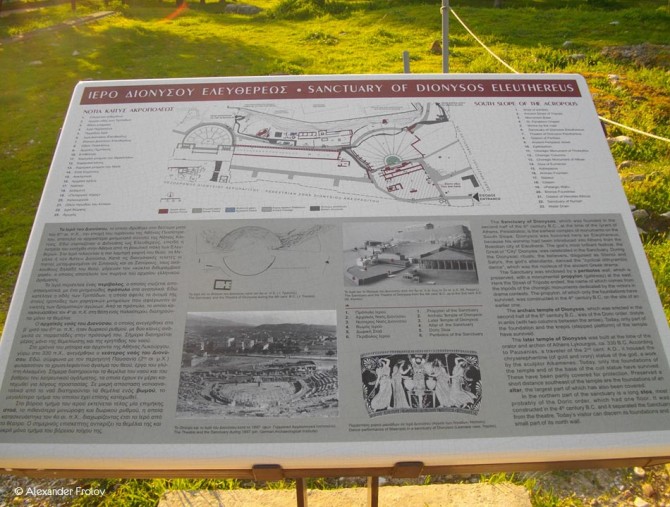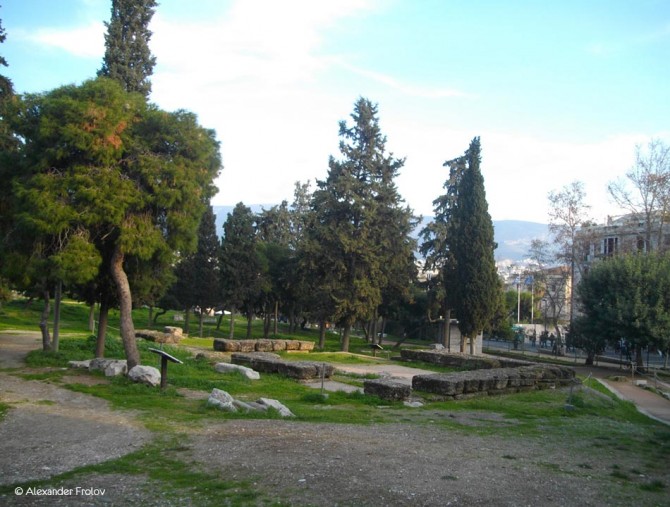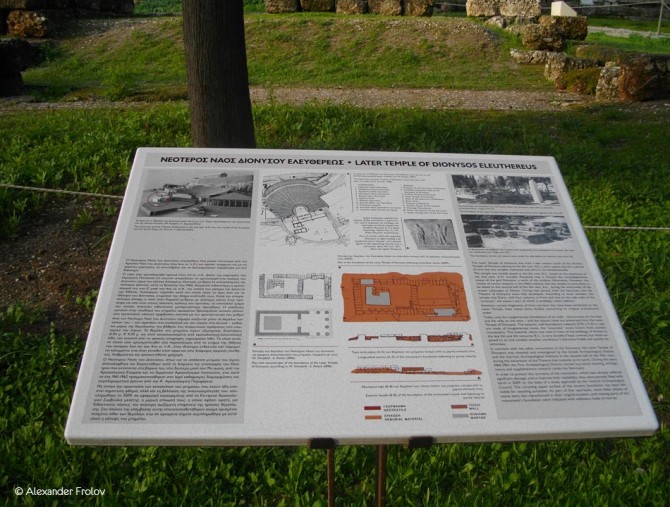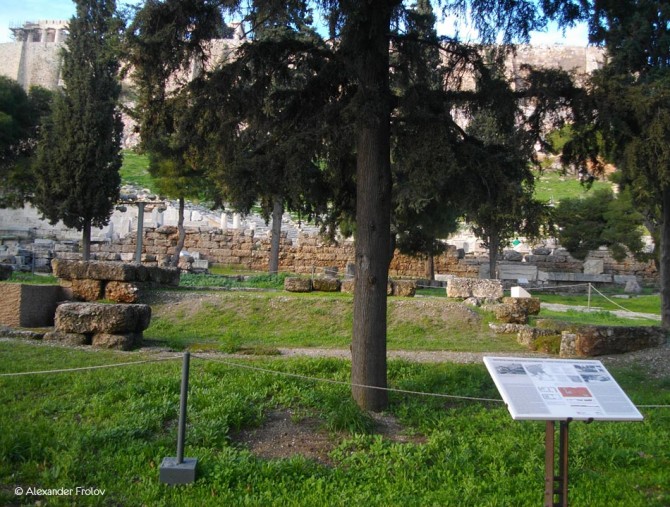Храм Диониса
В наши дни можно увидеть останки зданий, которые принадлежали святилищу в IV веке до н.э.. В их число входят два храма Диониса, алтарь, стоя и окружающие его стены. Изначально первый храм, построенный в VI веке до н.э., имел дорическую форму и был сделан из известняка. Второй храм, появившийся в IV веке до н.э., располагался к востоку от древнего. Стоя также имела дорическую форму и располагалась в северной части святилища. Она появилась там во времена правления Ликурга (около 330 год до н.э.). На сегодняшний день от святилища сохранились лишь фундамент и статуи.
Как добраться до Храма Диониса (Южный склон Акрополя):
- на метро, станции Акрополи и Тиссио
Часы посещения: 8:00-20:00, цена билета 2 евро. Также доступен вход при предьявлении билета за 12 евро, дающего право посещения Акрополя и всех важнейших археологических сайтов Афин.
Фото и текст: Александр Фролов
Temple of Dionysus Elefthereos
The Temple of Dionysus Elefthereos is the most important sanctuary of the South Slope of Acropolis and the very first monument you will see as soon as you enter the archaeological site from the central gate (Thrasyllou Street and pedestrian of Dionysiou Areopagitou).
The temple was founded in the 6th century BC, probably by the ruler Peisistratos or his sons, who brought the cult of Dionysus from Eleftheres of Boeotia in Athens (hence the surname “Elefthereos”). Every year, in the month Elafivoliona (end to March-early April), in this temple a big feast was taking place, the so-called Great Dionysia, which was the brightest feast in honor of the god.
What you will see today is the remains of the buildings that consisted the sanctuary around the 4th century BC: two temples of Dionysus, an altar, a Stoa and the wall which encircled the sanctuary, with the entrance in the eastern part. The archaic temple of Dionysus, built in the second half of the 6th century BC (right before the construction of the theater at the north), was Doric and probably made by limestone. In the second half of the 4th century BC, a second temple of Dionysus was built, at the east of the Archaic one. The newest temple was also Doric and housed the golden-ivory statue of the Dionysus, work by the sculptor Alcamenis. Today only the foundations of the temple and of the statue are still preserved, made by conglomerate stone. By this material was also made the altar, built at the south-east of the temple, of which only the foundations are preserved as well. The Stoa was a Doric building, at the north of the temple, and was probably added in the sanctuary in the times of the ruler of Athens, Lycurgus (around 330 BC). As for the wall that encircled the sanctuary, it was made by shell-limestone. Today you can see the foundations of its east and south part.
Temple of Dionysus Elefthereos, South Slope of Acropolis, Athens, metro station Acropolis. Visiting hours: Daily, 8:00-20:00. Last entrance: 19:30. Ticket prices: Full: 2 euros, Reduced: 1 euro. Special ticket package: Full: 12 euros, Reduced: 6 euros. Valid for: Acropolis of Athens, Ancient Agora of Athens - Areopagus, Archaeological Museum of Kerameikos, Hadrian’s Library, North Slope of Acropolis, Kerameikos, Museum of the Ancient Agora of Athens, South Slope of Acropolis, Olympieion, Roman Agora of Athens.
Τext: Marilou Pantazi





